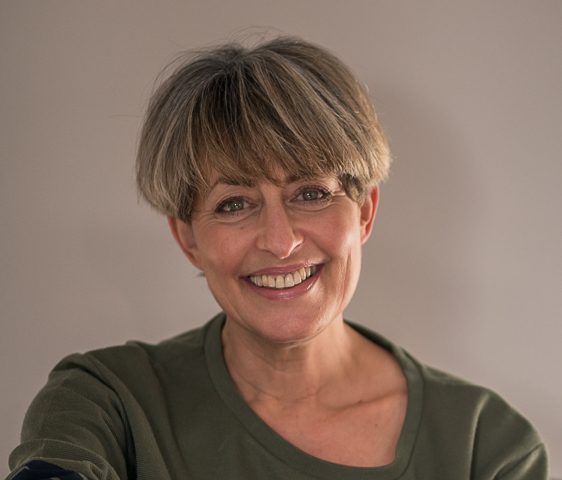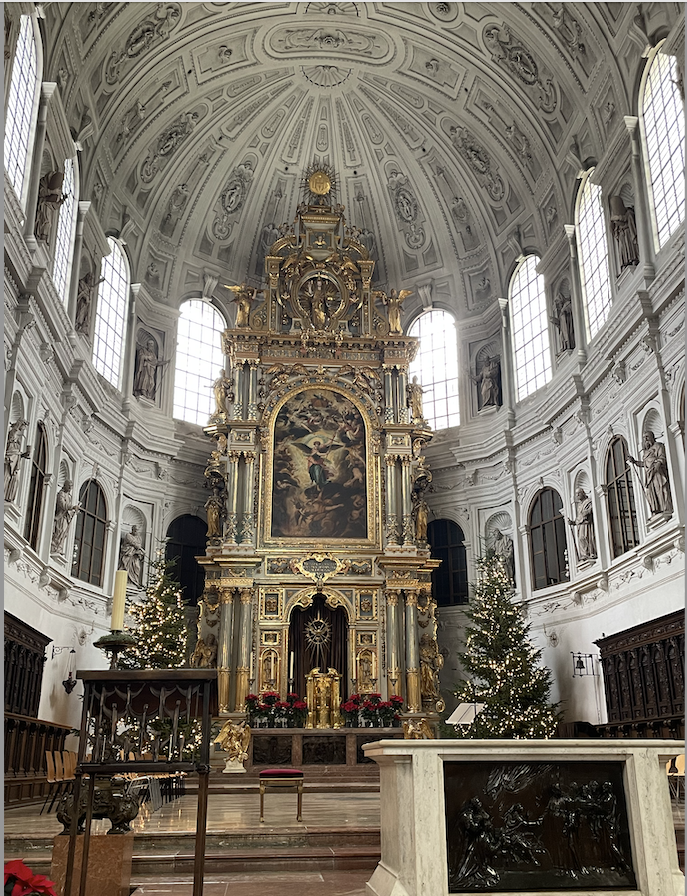8 things to do in 2 hours in Munich
Marienplatz, Munich’s main square ,on a sunny winter’s morning
I should probably start by explaining the time parameters of the title of this post. For cost-saving reasons, we flew to and from a recent trip to Oman via Munich. Our outward connecting flight was no problem, with a comfortable couple of hours between arrival and departure. But several weeks before we were due to travel, our return connecting flight was cancelled. Which meant we ended up having to stay overnight in Munich. Which in turn meant we had a couple of hours after breakfast before we had to head back to the airport to complete the final leg of our return journey.
Now we’ve clarified those semantics, and before I crack on with my what-to-do suggestions, I will just add that if you’re only going to have a couple of hours to spare to see somewhere
a) you’re necessarily going to have to limit your choice of destinations,
b) they’re likely to be the most obvious (for which also read touristy/popular) ones, and not even anything like all of those. So not only are there are no off-the-beaten-track nuggets to be found below, nor are there some of the sites that would easily earn their place on any other must-see list (apologies for the museums and galleries, parks and other notable buildings I’ve had to exclude)
and c) Munich turns out to be an ideal city to be a time-limited tourist in because so many of the visitor delights it offers are in a compact and easily accessible area.
1. Marienplatz - the main square
Marienplatz, the main square in Munich
The best place to start any whistle-stop tour of Munich is in its fabulously attractive main square. Founded in 1158, it was the point at which all of the city’s most important streets met and the centre of life for the inhabitants. Boarded, on one side by the stunningly ornate Neus Rathaus (New Town Hall, more about that below), the balcony of which is apparently immediately familiar to any football fans (which I very firmly am not) as the place where the championship celebrations for FC Bayern Munich take place, which - again I can only say apparently - happens with some considerable frequency, and on the other by the perversely far less ornate Altes Rathaus (Old Town Hall) which is 400 years older than its younger incarnation.
2. Altes Rathaus (Old Town Hall)
Altus Rathaus - the Old Town Hall in Munich
Out of historical deference I’ll start with the original town hall, which first appears in town records in 1310. That incarnation of the building was destroyed by lightning in 1460 and was rebuilt by the master builder who was also responsible for the city’s cathedral (see below). It’s been modified and renovated many times over the intervening centuries and after it sustained heavy bomb damage in 1944, the current iteration was based on the original Gothic design.
It officially became the Old Town Hall when the city’s administration moved into the Neue Rathaus in 1874. For many years its cellars were used as the state jail, but nowadays it plays host to celebrations, memorials and awards ceremonies, whilst four floors of its Gothic tower are now home to Munich’s Spielzeugmuseum or toy museum. Our time constraints meant we didn’t visit the collection of historic toys, but we definitely would have if the clock hadn’t been ticking.
3. Neus Rathaus (New Town Hall)
Neus Rathaus, the New Town Hall in Marienplatz, Munich
Construction of the New Town Hall - prompted by the city council outgrowing its original home - began in 1867 and was finally finished in 1905. Aside from the densely detailed features of its Neo-gothic facade and that (apparently) famous balcony, the building is is also renowned for the Glockenspiel clock housed in its tower. Each day at 11am, 12pm and, from March to October, 5pm figurines appear on rotating platforms playing out two scenes, one of which involves a Bavarian knight knocking his Lorraine rival off his horse using a lance, then a dance of barrel makers. It’s quite the spectacle and something not to be missed if you happen to be around at the relevant time. Which were were lucky enough to be.
The Glockenspiel clock in the tower of Neus Rathaus, Munich
You can do tours of the inside of the Neus Rathaus and go up the tower itself in a lift (the relevance of that important detail will become clear further down), but you need to book for both.
4. Frauenkirche (Munich cathedral)
Frauenkirche, Munich’s cathedral
Munich has more than 20 churches, but the one which dominates the city skyline with its two, 99 metre high, red brick towers and serves as the city’s cathedral, is Frauenkirche. In the same way that the Altus Rathaus is the less ornate of the two town halls, Frauenkirche isn’t anything like as gilded and glamorous as many of the other churches in the city - in part due to lack of funds while it was being built in the late 15th and early 16th century - but it is easily the largest and its interior, whilst it unquestionably quite stark, is impressive for its scale and simplicity, and for the monumental crucifix which is suspended below its vaulted ceiling.
The interior of Frauenkirche
Much of the interior of the cathedral was destroyed in World War II, but what survived, including the nave, several beautiful stained-glass windows, artwork from the 14th to 18th century and the tomb of the Roman Emperor Louis IV have been carefully restored.
The cathedral is also home to several unusual attractions including something popularly known as The Devil’s Footprint, a black mark on the cathedral floor which resembles a footprint and around which many entertaining legends swirl.
The teufelstritt or Devil’s Footprint in Frauenkirche
5. Jesuitenkirche St Michael (St Michael church)
Jesuitenkirche St Michael, Munich
A considerably more ornate church can be found along one of the pedestrianised streets just off Marienplatz. Jesuitenkirche St Michael, on Neuhauser Strase, is considered to be Germany’s first Renaissance church . Built between 1583 and 1597, its huge barrel vault was destroyed in World War II and rebuilt and a four year renovation completed in 2013 restored the building to it former gilded splendor.
The alter in Jesuitenkirche St Michael, Munich
6. Alter Peter (St Peter’s Church)
There’s more opulence, and an awful lot more gold, to be found in Alter Peter, or St Peter’s, the city’s oldest Catholic church. Thanks to its checkered structural history (it has been reconstructed a number of times in its 800 year history) its interior is a mix of Gothic, Baroque and Rococo architectural styles, and the ceiling fresco and astonishing altar are particular highlights.
But the other reason that St Peter’s attracts so many visitors is that for anyone prepared to climb the more than 300 steps up through the church’s 91-metre tower, skirting past its enormous bells along the way, is rewarded with some of the best views across the city and, on a clear day, even as far as the Alps.
I’m guessing you might have guessed that’s exactly what we did. So I can report it’s quite as exerting as it sounds. And very much worth it for the spectacular views from the top.
Views of Munich from the top of Alter Peter’s tower
Entry to the church is free, but it costs to climb the tower. Opening times and ticket prices are here
7. Viktualienmarkt
Viktualienmarkt, Munich
If you’ve worked up an appetite from all that exploring, and even if you haven’t, you won’t want to miss Munich’s most famous food market, which is just behind St Peter’s (if you can make it out on the lower right hand picture above, its the cluster of low green roofs in the square towards the front of the image). The eclectic collection of stalls, and small shops selling everything from bread and honey to alcohol and fresh produce, also includes a run of mouthwatering (if you like that kind of thing) units selling more meat, and especially pork, than you could shake a shank bone at.
There’s plenty to sample, and plenty of places dotted throughout the market to sit down and drink, eat and people watch to your hearts content.
8. Breiter hat shop
Brieter hat shop, Munich
This final recommendation is a bit left field, unless, like me, you’re a lover of (for which read a bit obsessed with) a great hat shop.
The eagle-eyed amongst you might have spotted that in the holding/opening pic, I’ve got a carrier bag in my hand. It’s from Briter, which is just along the street from St Michael’s Church and is , it turns out, Europe’s largest specialist hat shop. Needless to say I was like a moth to a flame, and although I already have an extensive hat collection (I wrote a post about why I love hats so much and the stories behind some of my favourites HERE) I’m not remotely ashamed to admit that I did add another to it.


















